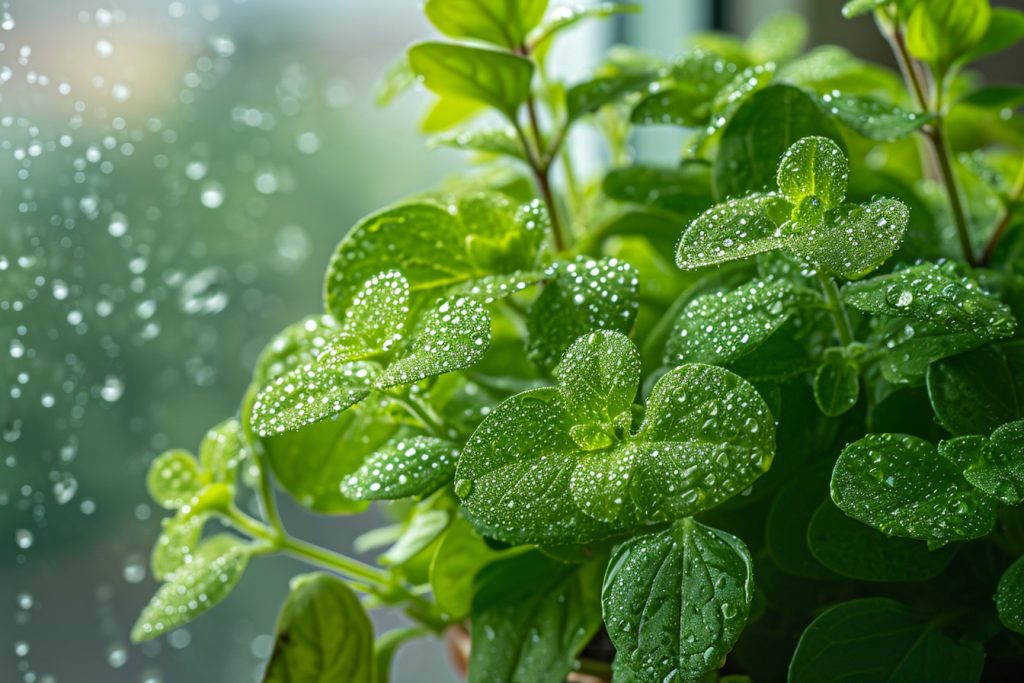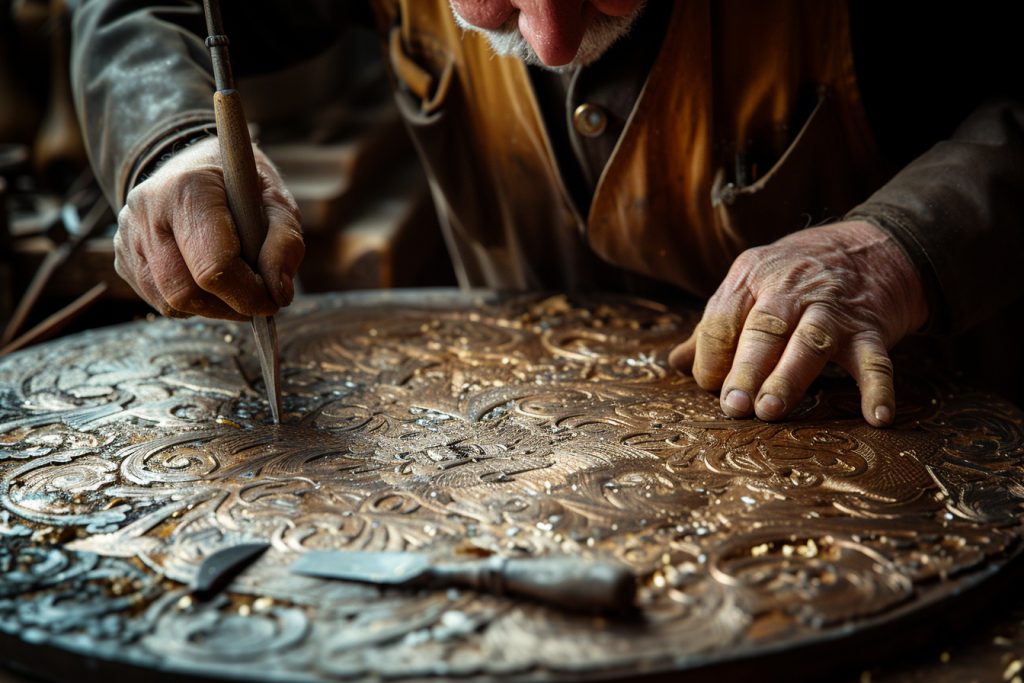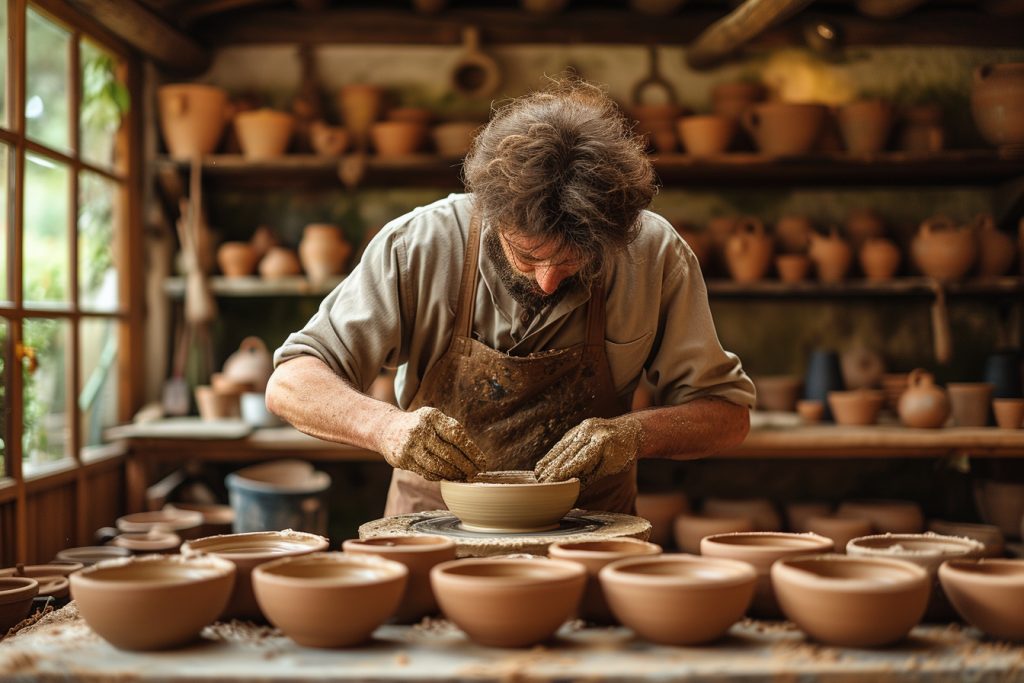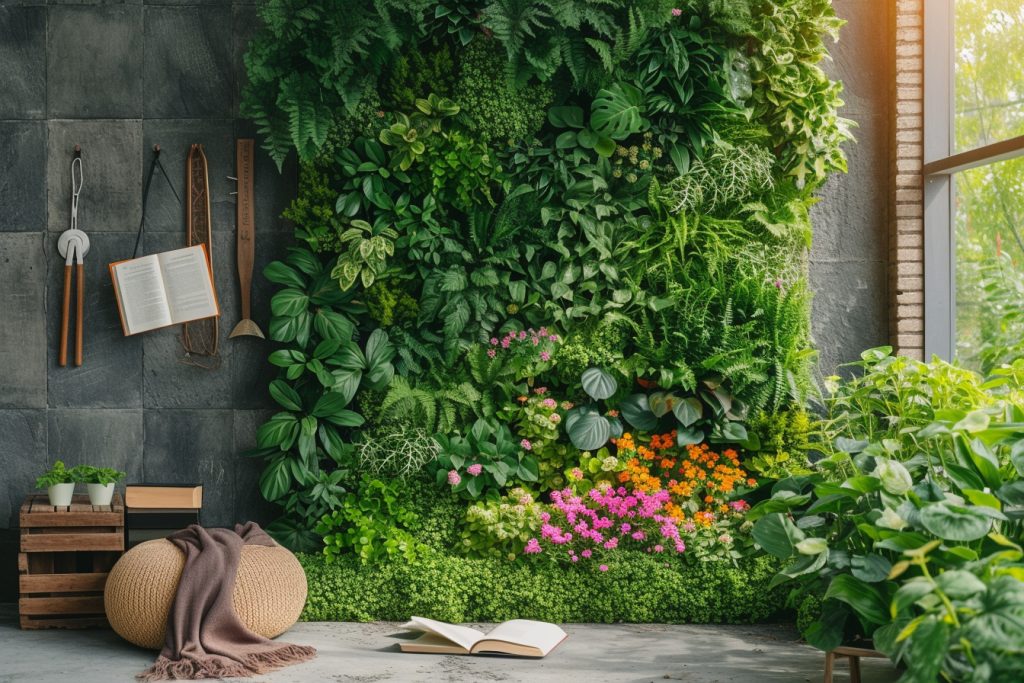Growing herbs in a terrarium offers both aesthetic pleasure and practical benefits, transforming an ordinary indoor space into a lush oasis brimming with greenery. Indeed, it’s a task that demands a careful blend of art and science, geared towards fostering the perfect environment for your aromatic plants. In this exploratory discussion, we will delve into the expert techniques for successfully cultivating a wide range of herbs within the unique confines of a terrarium setting.
Understanding the terrarium environment
Before we venture further, it’s essential to comprehend the science behind terrariums. Essentially self-contained ecosystems, they replicate natural environments on a much smaller scale. The transparency of the glass permits sunlight entry, while also creating a unique microclimate within, characterized by higher humidity and somewhat stable temperatures. Such ecosystems can be highly conducive to growing a variety of herbs, given that conditions are properly moderated.
Selecting the right terrarium
Open vs. Closed Terrariums
The first decision to make involves choosing between an open or closed terrarium. Open terrariums facilitate better air circulation and suit herbs that thrive in less humid conditions. Conversely, closed terrariums trap moisture and heat, cultivating a tropical atmosphere perfect for moisture-loving herbs.
Size Matters
Space is a luxury in a terrarium. Larger terrariums allow for more plants and greater creativity, but smaller ones can be equally effective if managed correctly. The key is to ensure there’s enough room for growth without overcrowding the plants.
Choosing suitable herbs for your terrarium
Strategic herb selection is critical. Herbs like lemon balm, thyme, and oregano, which prefer dry conditions, fare well in open terrariums. For a closed environment, consider herbs such as basil, parsley, and coriander which appreciate the humidity. Additionally, dwarf herb varieties are an excellent choice to prevent the plants from outgrowing their miniature habitat.
Preparing the terrarium
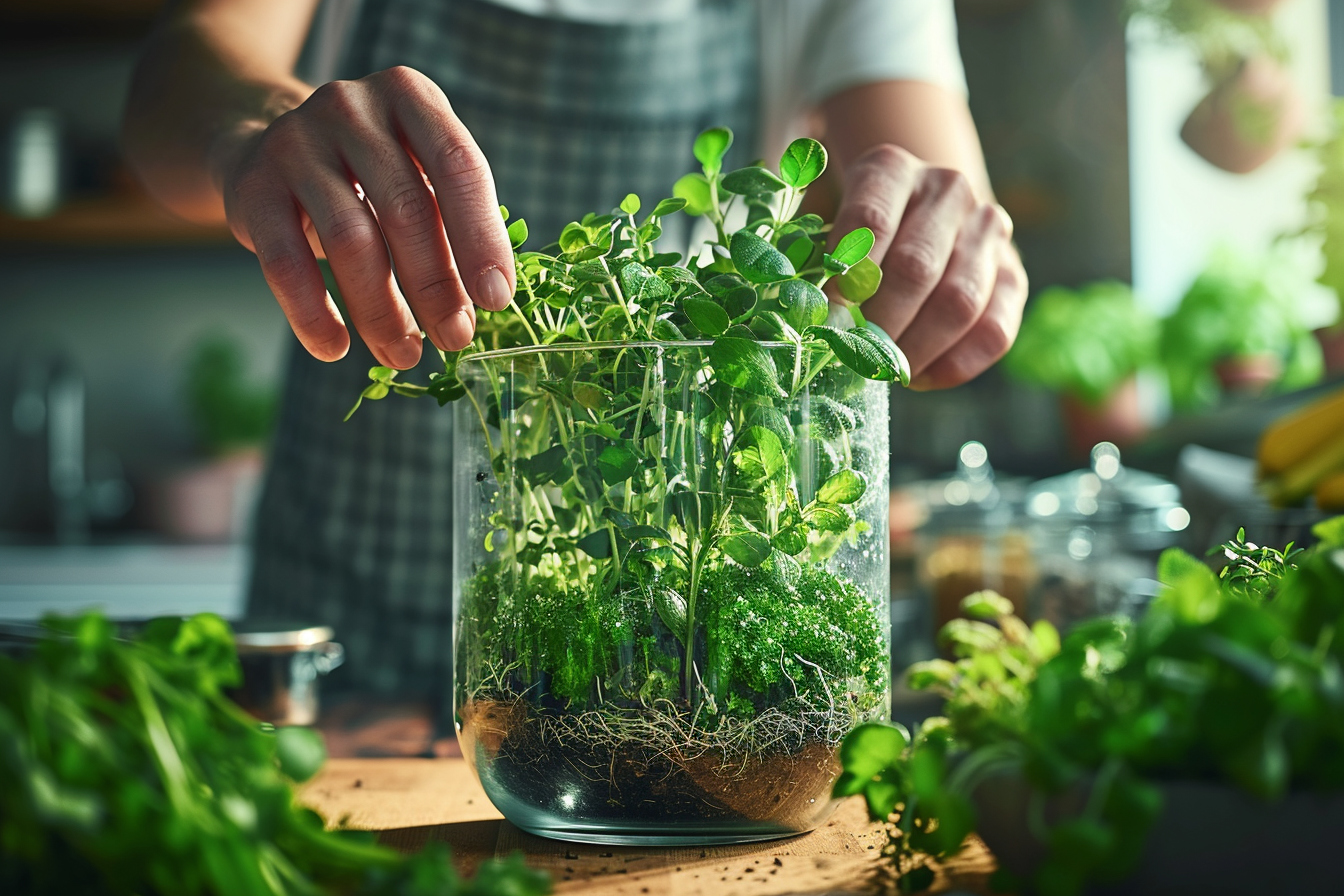
Layering for Success
Before planting, the terrarium must be layered effectively. A base layer of stones or gravel facilitates drainage, preventing root rot. This is topped with a layer of activated charcoal to absorb odors and toxins. Finally, a substantial layer of potting soil specific to herbs provides the necessary nutrients for plant growth.
Planting your herbs
Gentle Handling
When transplanting herbs into the terrarium, handle them gently to minimize root stress. Create small wells in the soil for each plant and nestle the roots in carefully before backfilling with soil, ensuring that each plant has enough space to grow.
An Eye for Design
Careful consideration of plant placement can result in a visually stunning terrarium. Taller herbs can act as a backdrop, while creeping or shorter herbs can take center stage. Not only does this create an appealing miniature landscape, but it also ensures that each plant receives adequate light.
Expert lighting considerations
Herbs typically require plenty of bright, indirect light to thrive. A location near a north or east-facing window often provides the optimal balance of light without the harsh direct sun that could potentially scorch the delicate plants within the glass confines.
Artificial Options
For those lacking sufficient natural light, grow lights are a fantastic alternative. LED or special full-spectrum bulbs can mimic natural sunlight and are invaluable in keeping your terrarium herbs healthy and vibrant.
Achieving humidity harmony
Balancing Act
A major challenge in terrarium gardening is managing humidity levels. Too much can lead to fungal growth, while too little causes the herbs to wilt. Regular monitoring is key, along with adjustments to watering frequency or even temporarily opening a closed terrarium to reduce excessive moisture.
Watering Wisely
Herbs do not fare well with soggy feet. Thus, watering should be moderate, ensuring the soil is moist but not waterlogged. Employing a spray bottle or a watering can with a long spout gives you better control over water distribution.
Nutrient management for healthy growth
While terrariums can be somewhat self-sustaining, the enclosed space means nutrients in the soil will deplete over time. Incorporating a balanced, slow-release fertilizer helps maintain the vigor of your herbs. Be cautious not to over-fertilize, as the confined space could amplify negative effects.
Pruning and harvesting: a delicate touch
Pruning not only keeps your herbs at a manageable size but encourages bushier growth. Harvesting leaves for culinary use actually contributes to the health of the plant, stimulating new growth. It’s a delicate dance between enjoying the fruits of your labor and ensuring the continuing life of the herb.
Preventing pest problems
A closed ecosystem can, unfortunately, become an incubator for pests. Regular inspection of your herbs can catch early signs of infestation, such as discolored leaves or webbing. Isolating affected plants and using natural pest control methods like neem oil helps maintain an ecological balance.
Long-Term care and maintenance
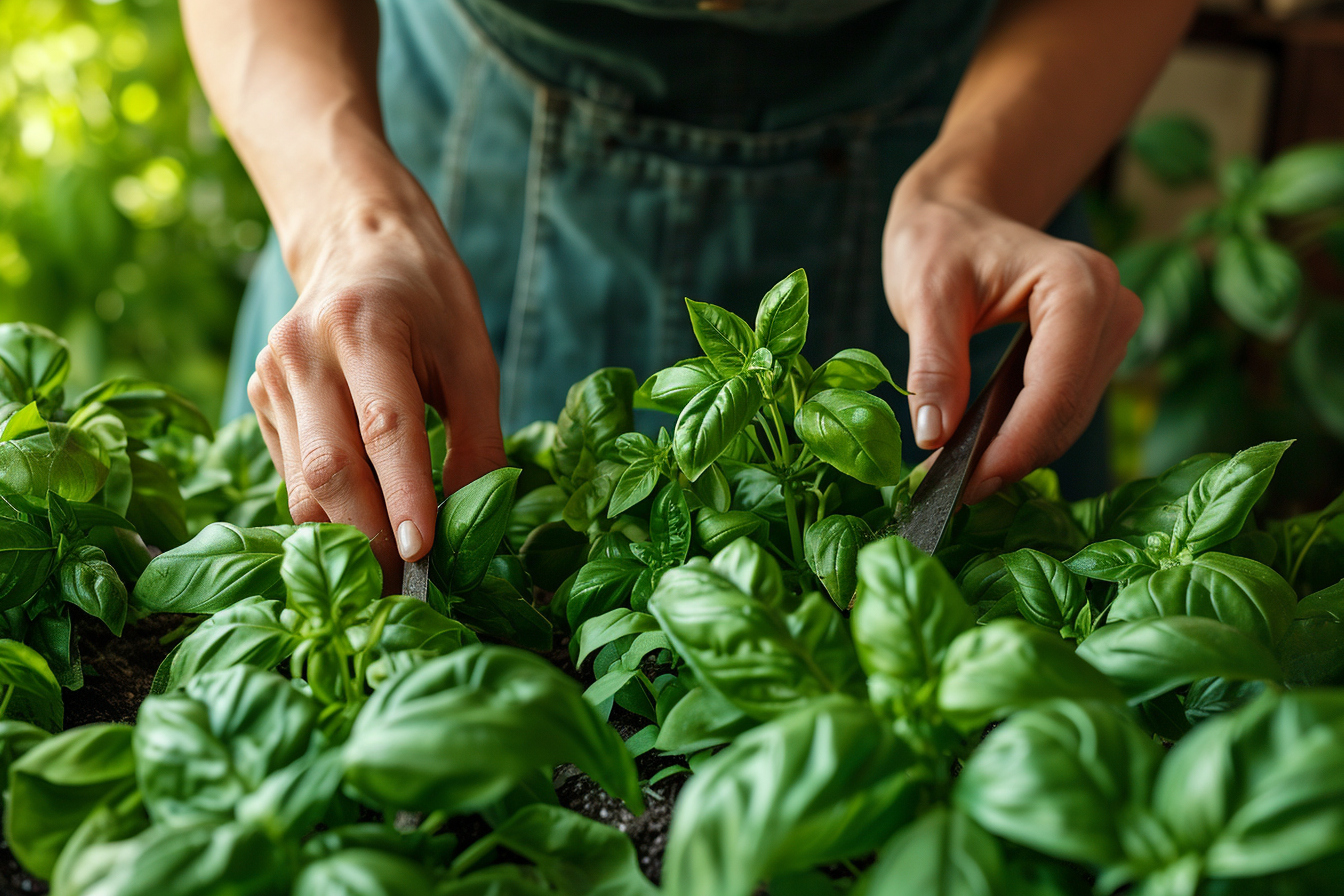
Consistent Observation
Vigilance is crucial to the long-term success of a herb terrarium. Keeping a watchful eye on the microclimate changes, growth patterns, and the overall health of your plants allows you to intervene with adjustments as needed.
Replanting and Rejuvenation
Over time, herbs may outgrow the terrarium or deplete the soil of its resources. Periodically, you may need to replace the soil, divide plants, or even start fresh with new herbs to ensure the ecosystem remains both attractive and productive.
Terrarium gardening marries the joy of indoor plants with the challenge of micro-environment management. It is a rewarding endeavor that brings the beauty of nature into your home and carries the potential to supply fresh, aromatic herbs year-round. Each herb terrarium is a unique world unto itself, with personalized touches that reflect the care and thought invested into its creation. Through careful selection, vigilant maintenance, and a nurtured passion for tiny green worlds, even novice gardeners can become proficient cultivators of these glass-enclosed gardens. Remember, success in growing herbs in a terrarium comes down to observing, learning, and adjusting practices to create the perfect conditions for your green companions to flourish.


